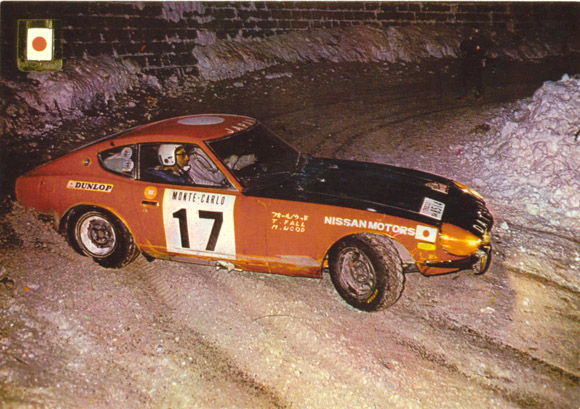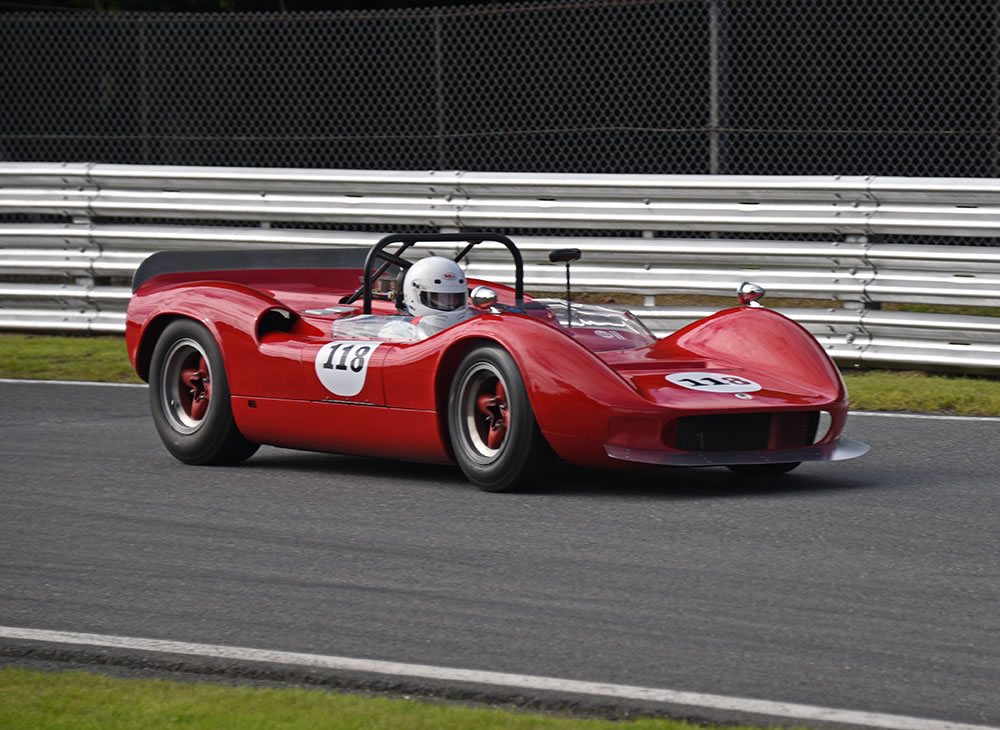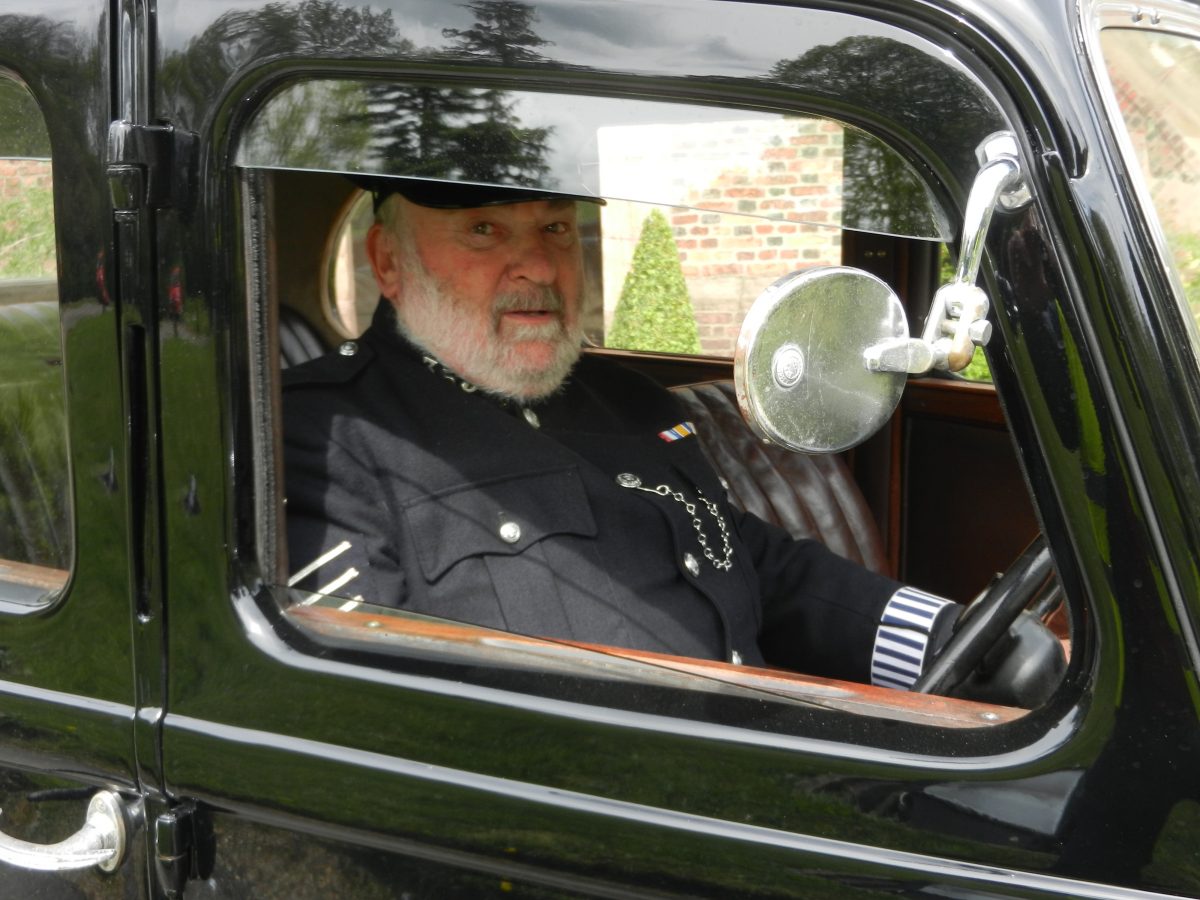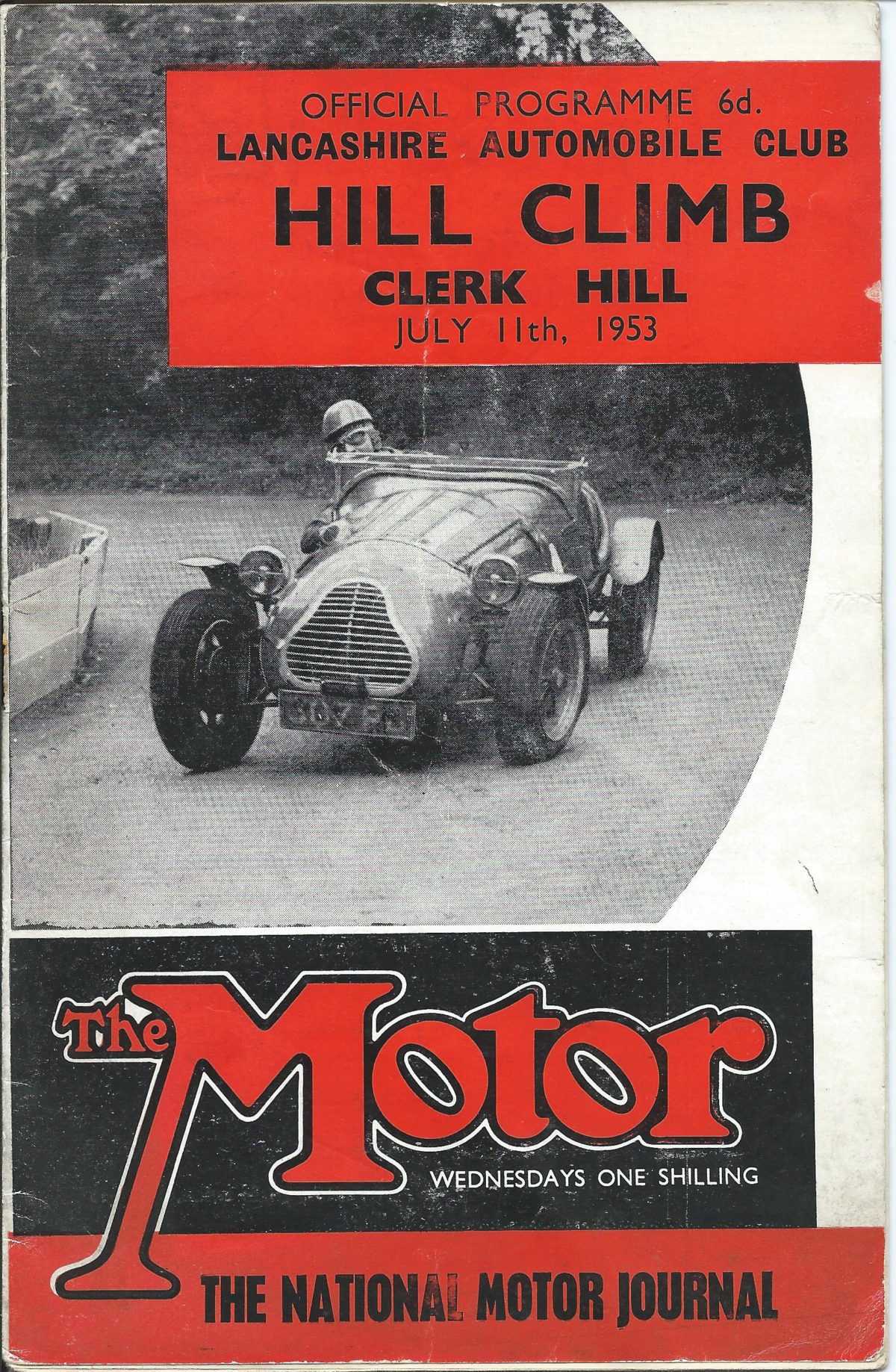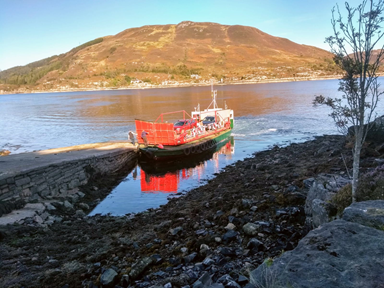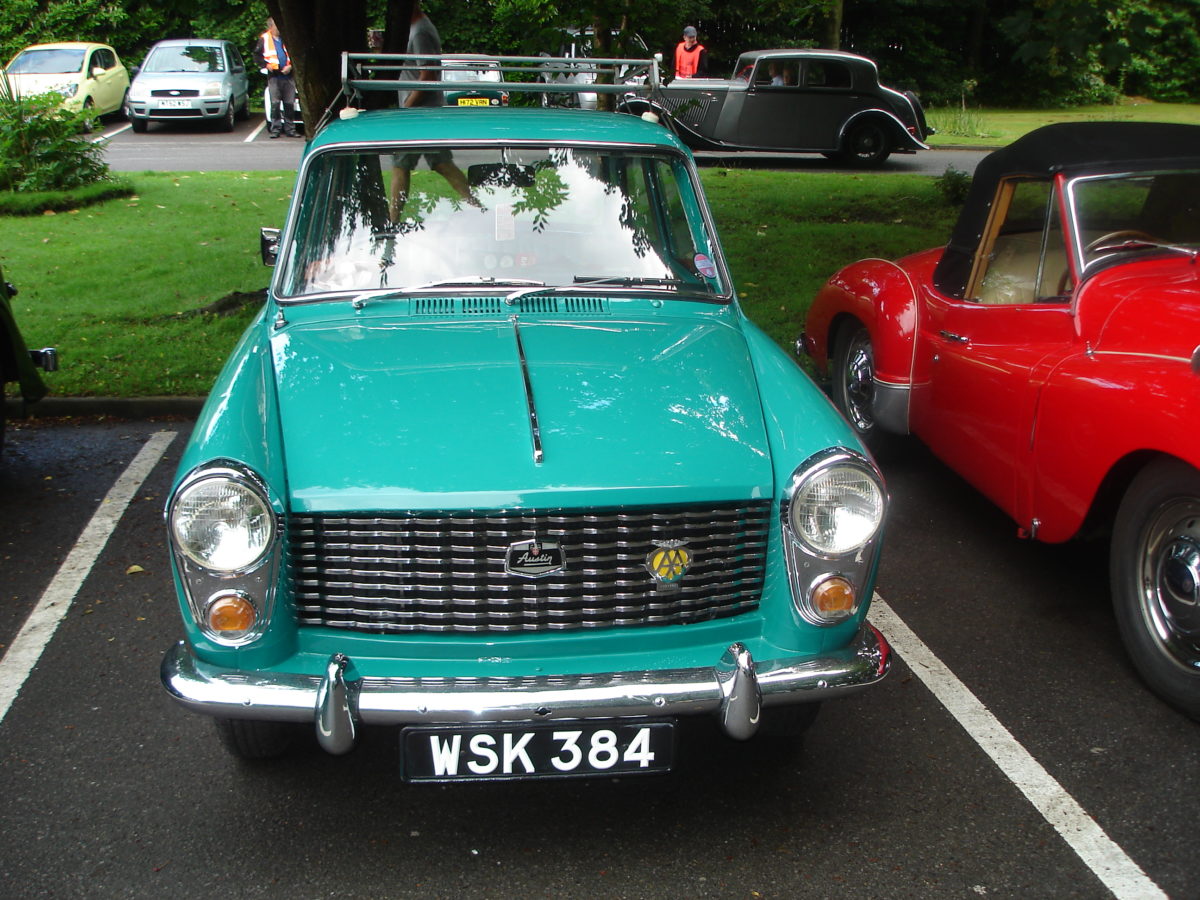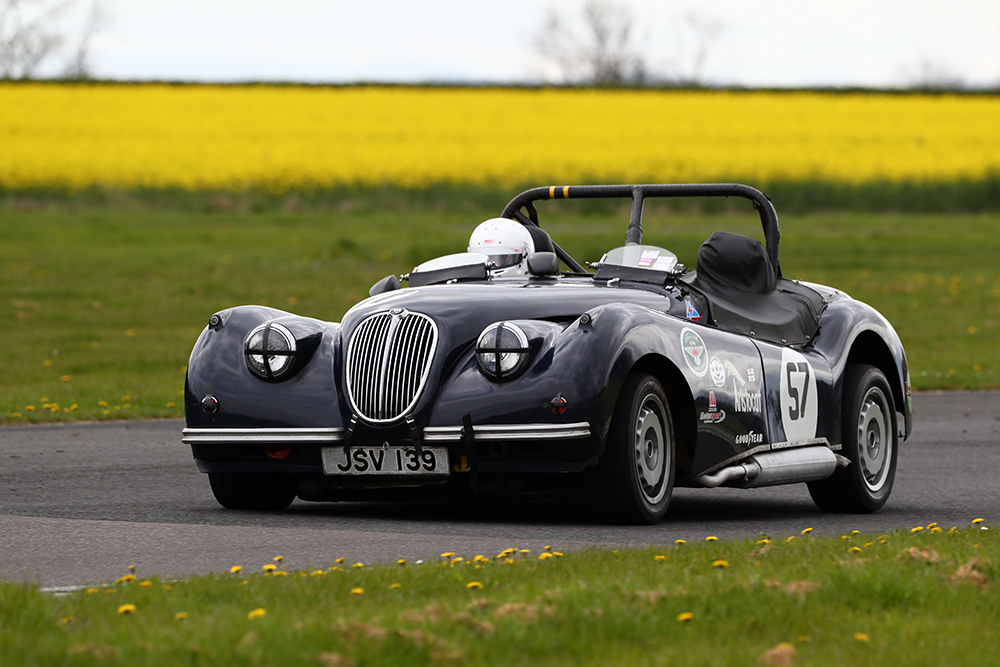Author: chrislee
Motor Racing Memories.
Videos of Mike Woods Monte Carlo Rallies 1958 – 1973
What a night!
Those of you who enjoyed Mike Wood’s Monte Memories last night certainley had a real treat. Mike was on form and the packed Whalley Golf Club, with around 100 in attendance, had a great evening.
We promised to make videos of the Monte Carlo Rallies we found of Mike on the rallies available so here we go.
Simply click on the link to seethe video.
1958
https://www.youtube.com/watch?v=cY7r4mj3AOY&t=7s
1963
https://www.youtube.com/watch?v=_qKfCjbQt5E
1968
https://www.youtube.com/watch?v=KUJJPmd8dcE
1970
https://www.youtube.com/watch?v=XjiQ8Zml5jQ
1972
https://www.youtube.com/watch?v=TUzr-Nw7yaI
1972
https://www.youtube.com/watch?v=8_aG9ObMWfQ
And finaly 1973
McLaren Mk1B at Oulton Park Gold Cup
Simply click on the link below and enjoy!
Fitment and Use of Safety Belts
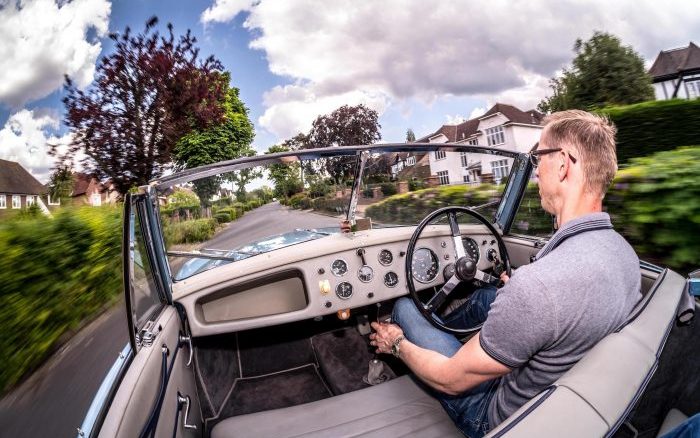
A guide to seat belt law for classic cars so you can understand exactly what your obligations are.
Since 1983 it has been a UK requirement to wear a seat belt. However, prior to 1966, it was commonplace for cars to be manufactured without seat belts, so there are some exemptions for classic car owners
Do classic cars need to have seat belts in the UK?
If a classic car was originally manufactured without seat belts, then it currently does not need to have seat belts fitted. Many cars were manufactured without them prior to new legislation introduced in 1983 that required passengers to wear seat belts.
However, according to guidance provided by the DVLA, without seat belts, drivers are limited to which passengers are able to travel in the vehicle. There are restrictions to transporting children, with no children under the age of three permitted to travel in a car without seat belts. Children over the age of three can travel in the car but are only allowed to sit in the back seats.
What year of car is exempt from seat belts?
If your car was made before 1965 and seat belts were not fitted at the point of manufacture, you are not required to fit them.
In the UK, it became compulsory for manufacturers to install anchorage points in vehicles in 1965, with the requirement for three-point belts in the front outboard positions following three years later. The 1968 legislation necessitated that all new vehicles be fitted with seat belts, and any vehicle dating back to 1965 must be re-equipped.
My classic car doesn’t have seat belts, will this affect my insurance?
Due to the lack of the additional safety feature, classic cars without seat belts are likely to be more difficult and expensive to insure. However, insurance companies that specialise in classic vehicles can ease the process of getting your classic car insured.
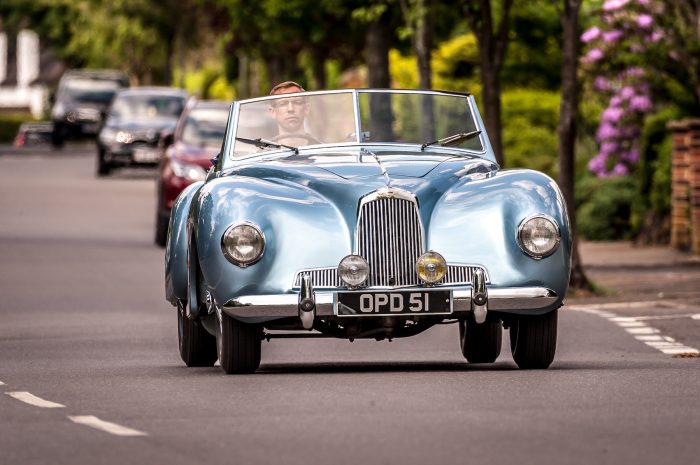
Who has to wear seat belts if they are fitted?
Legislation states that if seat belts are fitted in the seat you’re using, they must be worn when the car is being driven. The law also states that only one person can sit in a seat with a fitted belt at a time.
For children, the appropriate car seat for their height or weight must be used until they reach 135cm tall or reach the age of 12, whichever is first.
Are there exemptions to the seat belt law?
There are a few exemptions to the seat belt law. For example, drivers do not have to wear a seat belt when reversing, nor does a supervisor when a learner is reversing. You do not need to wear a seat belt if you’re in a vehicle being used for police, fire and rescue services, or are a passenger in a trade vehicle and are investigating a fault.
If you are driving a goods vehicle and there is less than 50 metres between stops then you are also exempt, as well as taxi drivers who are ‘plying for hire’ or carrying passengers. There are also medical exemptions, in which you much receive a Certificate of Exemption for Compulsory Seat Belt Wearing. This must be kept in the vehicle. You will also be required to inform your car insurer.
What’s the penalty for not wearing a seat belt?
Currently in the UK, if found not wearing a seat belt when required, you could be fined up to £500. However, a recent proposal could also see drivers face points on their licence for not wearing seat belts, although the Department for Transport has not said how many.
Who’s responsible for ensuring passengers wear their seat belts?
It is the passenger’s responsibility to ensure they are wearing their seat belt, and anyone not wearing one when required could be fined up to £500. However, if the passenger is under the age of 14 then the driver is responsible for ensuring they wear a seat belt or are suitably restrained. If they are caught not wearing one, the driver will face the penalty.
LAC – Clerk Hill Hillclimb
Lancashire Automobile Club Clerk Hill Hillclimb.
For Christmas in 1958, when I was eight years old, I received a fantastic Christmas present ‘The Eagle Book of Cars and Motorsport’ in its 192 pages I learned about how cars work, are designed and built as well as much of the history of the motor car.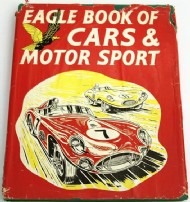
One particular section really fired my young imagination that was obviously the one concerning motor sport. In this section I learned that motorsport wasn’t just racing in some far off circuit but had local roots. One photo really hit a chord and that was of a car hurtling up a rough hillclimb course not far from home at an event organised by a local club.
That hillclimb was a Clerk Hill near Whalley and the club was, of course the Lancashire Automobile Club – I was truly hooked!
Sadly, I leant the book to a friend (you know who you are!) some years later and, as is the way with all things it got lost. Imagine my surprise when a copy of the very photograph was sent to me, via Mike Wood, from John Wadsworth.
Thanks to John and Mike I have managed to piece together some more details on this particular bit of club history.
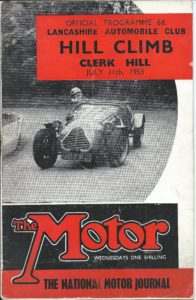
The hillclimb was first held in 1951 and the picture is from the 1953 event. The competitive section of the hill itself was about 250yds with left and right hand bends with an average gradient of one in eight. Whilst the steepness of the hill presented little difficulties to the cars and motorbikes of the time the loose surface and tricky bends placed a premium on skilful driving and throttle control. Even then health and safety was a concern and the programme stated “spectators are strongly recommended to position themselves around the course in such a manner as to avoid stones flung up from the wheels of the ‘throttle happy’ types.”
It goes on to say “The danger points are indicated, and in any case should be obvious to you as an intelligent person; the not so intelligent people who get themselves hurt may have attention from the St John Ambulance men who will be present, but we don’t want to trouble these gentlemen if it can be avoided.”
As a final warning it states “The course must be kept clear whilst the competition is in progress, otherwise the Clerk of Course will suspend racing until the course is cleared; the co-operation of all spectators in this matter will be appreciated.”
There were joint Clerks of Course. Jack Taylor, for the motor cars and AB Gaskell, for the motorbikes. Secretary of the meeting was Jack Duckworth who was still active when I first joined the club.
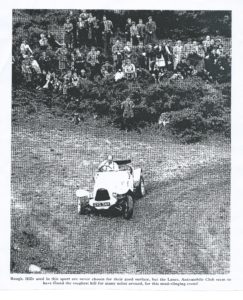
The picture from the Eagle Book (right) is of Mike Wilson in his ‘special’ car number 27. Mike was entered under BARC and as you can see driver protection, although normal at the time, was pretty non-existent. According to Mike Wood’s records Mike Wilson managed the 250 yard course in 34.3 seconds which was amongst the quickest times on the day.
According to Mike’s records the fastest of the car entry was J. Clegg entered under Lancs and Cheshire Car Club also in a special with a time of 32.4secs closely followed by LAC member Charlie Hardman in his Dellow with a time of 32.8secs. Charlie was a very good rally driver in those day’s.
Mike Wilson is best remembered as Clerk of Course for the Yorkshire Rally and stage commander for many years on some of the Yorkshire Stages on the RAC Rally. Again another in another interesting twist Mike Wilson masterminded the Harewood Hillclimb which opened in 1962 and is still in use to this day. Perhaps Clerk Hill played no little part in Mike’s thoughts.
As for Clerk Hill itself with its limited length it’s time in the limelight was short lived.
By the way if you wonder where it is Whalley Golf Club where many of you have attended LAC events is situated on Clerk Hill Road so the links continue to this day.
Chris Lee
Highland 3 Day 2019 Report by Keith and Linda Lewin.
The seed was sown after the 2018 LAC Coast to Coast run. We had taken part in our Triumph TR4, our son Mark with his wife Katy in their Morris Minor 1000 (nicknamed Cherry) and our Grandson Kyle with his Dad Paul as navigator in his Morris Minor 1000. Mark and Kyle said they wanted to do the Highland 3 Day and I got roped in. Unfortunately, due to work commitments, Kyle wasn’t able to enter and Katy had to be home with the children. We roped in my brother, Michael, as navigator for Mark and Linda would navigate for me assuming she could stay awake! For backup, I would follow Mark and we fitted CB radios.
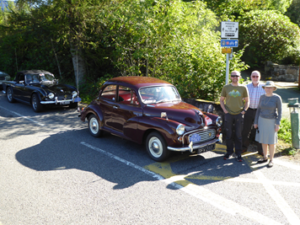
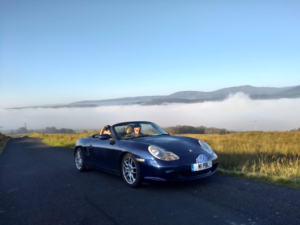
Team’s Lewin Team Livesey and Brown on top of the world
Linda and I were already in Scotland having been to the Bo’ness Revival and Hillclimb and then on to a TR Register Highland Tour so we arranged to meet at the Rosslea Hall Hotel. Fortunately, the weather had changed for the better as it had been a miserable couple of weeks weather wise.
Day 1
Saw us leave the Rosslea Hall Hotel in thick mist, equipped with our tulip diagram Route Book, an alternative route for later in the day and a diagram of the Glen Coe Auto Test. At this point, it is probably important to say it is advisable if you or your navigator can have a quick read through these documents to save, in my case, embarrassment later. We soon left the main road, joining the Glen Fruin road where, as we descended to the main A82, the sun started to burn through and we had glorious sunny weather for the rest of the day. At the top of the Rest and Be Thankful Pass, we took the single-track road heading for Loch Goilhead followed by Inveraray, Glen Orchy, Rannoch Moor and the head of Glen Coe. The Glencoe Mountain Resort was the venue for lunch and the first part of the “Gymkhana”.

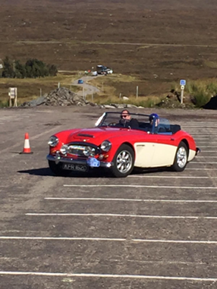
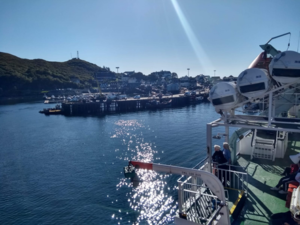
The rest and be thankful Glen Coe test Malaig Ferry
The test consisted of two runs through a course of cones, the object being to achieve the same time on both runs. Having watched a couple of cars do their first run, Linda remarked that “they didn’t go very fast, we can beat them”. Never having had the green light before, the blood rushed, I missed a cone and then found out what the rules were. Ah well, there would be another chance on the final day.

Balmacara Hotel
After lunch we took the Corran Ferry before passing along the shores of Loch Sunart through the ancient oak forest on single track roads heading for the 3pm ferry at Mallaig. At this stage, we realised time was tight if we were going to make it and a particularly slow driver who antagonised even the locals didn’t help. Once clear, Mark unleashed all 48 horses (well, some may have escaped over the years) under the hood of Cherry and we managed to catch the ferry over to Skye by the skin of our teeth with Stuart and Linda Mason who had been following us. Some drivers were already on board and some had to catch the later 4pm ferry.
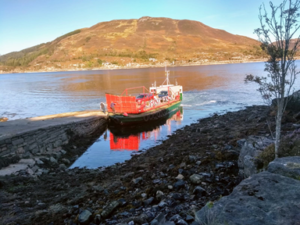

Glen Elg Kyle Rhea Ferry Dinner at the Balmacara Hotel
From the Isle of Skye, we elected to take the alternative route over the last remaining manually operated turntable ferry in Scotland. The main route was over the Skye Bridge. The Glenelg ferry runs from Kyle Rhea to Glenelg and generally takes six cars. Loading was tricky as, being the last car to load, my exhaust locked onto the quay and didn’t want to board. The crew’s experience showed and by getting the two cars in front to reverse and then coordinating a simultaneous move forward, we were on. Final destination of the day was at the Balmacara Hotel where we arrived soon after. A Navigation Exercise was available which many completed but we opted for a much-needed drink in the bar. With, hindsight, we should have done it.
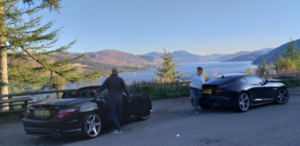
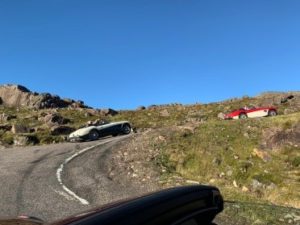
Loch Carron Bealach na Ba
Inner soun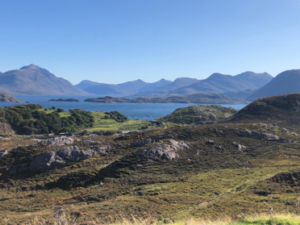 d of Harris
d of Harris
Day 2
Was another glorious sunny day with not a cloud in the beautiful blue sky. Again, the day’s route book was handed out after breakfast along with an alternative route taking in the Applecross Loop over the classic Bealach na Ba pass (Pass of the Cattle). In addition, there was a navigation test for the morning and afternoon sections. These would be the first we had ever done but, being fairly competent with maps, we were confident we wouldn’t make total idiots of ourselves. As with the Glenelg Ferry, we were determined to do the Applecross alternative and were confident that both cars were up to it. The reasoning was if we’ve come this far, we’re going to see the highlights. And what highlights they were. The climb up the pass was exhilarating with hairpin after hairpin up to the summit at 2000 feet. Both cars performed admirably with Cherry leading the way showing you don’t need big powerful cars to take part. As Mark said, back in the sixties, these were the everyday cars making the climb. The views over to the isles of Raasay and Rona, set in beautiful dark blue to shimmering emerald seas were magnificent. I accept that we had the perfect day but, on a day like that, I challenge anyone to find better, more majestic and magnificent scenery anywhere on earth.

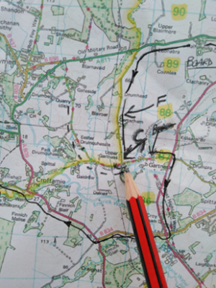
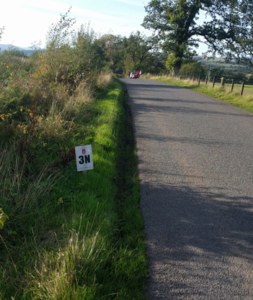
Navigation test
Just before the lunch stop at the Loch Ness Hotel, we undertook our very first Navigation Exercise. Fortunately, Mark and Michael studied the map before leaving the Balmacara hotel in the morning and all we had to do was take the correct turns on the road and spot the relevant marker boards to prove we had gone the right way. Great fun with added confusion and self-doubt when cars were passed going the opposite way.
An excellent buffet lunch was served at the hotel following which we set off for the run to the afternoon Navigation Exercise and Nethybridge. It turned out, Linda and I were still looking for marker boards several miles after the exercise had finished and the route re-joined. If only Linda could manage to stay awake!
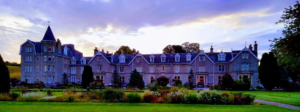
Netheybridge Hotel
Day 3
Overcast and a little gloomy, we checked the cars and were surprised to see two Trabants in the car park. Their rally boards stating “Bugger Bognor. 50th Anniversary Road Run Sussex to Cape Wrath”. All credit to them!
Soon after the start, there was a scheduled round of the gymkhana arranged and a chance to redeem myself. Unfortunately, there were two Motorhomes parked up on the car park and it appeared they were still asleep. It was deemed prudent, to save the good name of the Club, to abandon the test rather than wake them up to the screeching of tyres and revving engines. The morning route took us through Dalwhinnie and over the Drumochter Summit on the A9. On the way to the lunch stop, we passed somewhere in the region of 30 – 40 Maserati cars travelling in the opposite direction, their number plates showing they were from all over Europe.
After another excellent lunch in Kenmore we left and were soon into another Navigation Exercise. By now, the rain was continuous staying with us as we passed through Crianlarich and along the shores of Loch Lomond till we were arriving back at the Rosslea Hall Hotel where it had virtually stopped.
Overall, the cars performed perfectly, only needing a little oil top up. The scenery was breath-taking, the roads challenging and remarkably well surfaced in the main ranging from single track roads to fast A roads. The hotels and meals were first class and welcoming. The weather was fantastic up to the last day so yes, the sun does shine in Scotland and when it does, you are in for a real treat. The company was warm and friendly and the organisation was outstanding. It is difficult to express our thanks to Mike Raven and his team adequately. It is obviously a well organised team that he has and it must take an enormous amount of time to organise. Thanks again to everyone involved.
Would we do it again?
Definitely. Hopefully next time with three generations in two Morris Minor 1000s and a TR4.
Regrets?
Only the one.
Mike is taking a well-earned rest in 2020 after 21 years organising the tour. Hopefully, he will return fully reenergised in 2021 and we will definitely put our names down.
Thanks again for a great weekend.
Keith and Linda Lewin.
1963 1974 and 2016 Manchester to Blackpool videos
Sometimes we come across an interesting video or two
The first is from 1974
Here’s one from 2016
And here’s one from the first run in 1963 (the first event was a display and run along the Promenade in 1962)
LAC Members since 1967
Anthony, Carolyn and Richard Taylor celebrate 50 years of Autotune Ltd. at their Rishton workshop. Life and work has evolved over the past years, with work on cars when we started, building Lotus Elans, to avoid purchase tax, servicing customers` GT 40s, Astons, DB2 to DB6,and Jaguar E types and Mk 2s, as regular every day road cars. Back then people would ask why we always drove these awful cars, why not go and buy a super new Ford? Why?!
There were 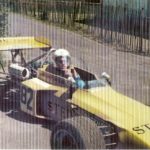 always racing cars in the workshop, usually single seaters, as hill climbing in this area was really big with LAC, Lancs. Car Club and Longton Motor Club all running sprint and hillclimb championships.
always racing cars in the workshop, usually single seaters, as hill climbing in this area was really big with LAC, Lancs. Car Club and Longton Motor Club all running sprint and hillclimb championships.
Chris Lee asked recently if we remembered winning all three championships in the same year, with our magnificent Formula Atlantic Ensign.
As a family we were pleased to win the Historic Sports Car Club Championship in the brutal Chevrolet powered Kincraft, over 2 Litre, in 1978 and then two years later won it again in the very pretty Willment BRM; the latter car held the Class Record at Thruxton for a few years.
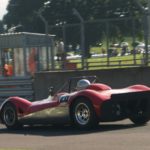
We havesupported all forms of motorsport, maintaining and participating, and always with an LAC badge on the cars. The Goodwood Revival has always been our favourite event, great atmosphere, best parties, good racing and we have missed only two since it began, driving the McLaren M1B, Chinooks and the Willment BRM.
The most iconic moment was when all mechanics sported the LAC badges at the Goodwood Revival, and Canadian customer Jay Esterer who had never raced in England, seen the circuit, and driven the 5.7cc Chinook only once since we rebuilt it from the ground upward, won the Whitsun Trophy race outright. What a weekend! He had owned the car since he was 17 and sent it across for a rebuild. Dreams come true!
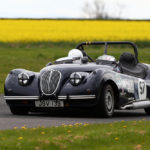
To keep us up to date, we sponsored and competed in the Harewood Sprint in June driving the Aristocat Jaguar, manufactured here at Autotune, and the July Aintree Sprint in a Lister Knobbly Jaguar which we won, and still hold the Class Record in the Aristocat.
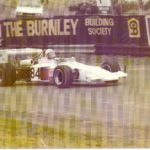
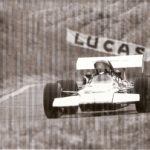
So, it has been thoroughly enjoyable, hard graft, long hours, little spare time, but has taken us all racing around the world, across Europe, America, Canada and South Africa. And now son, Richard who gained a First Class Honours Degree in Motor Sport Engineering is hard at it in the workshop, along with another of his Graduate Engineering pals, which is currently full of interesting McLarens and Lolas; nothing has changed only the age group.
JAG CORNER Memories Of A Mark 1 Jaguar
The 2.4 and 3.4 later known as the Mark 1 is one of the forgotten cars within the Jaguar range. When it was originally launched as the 2.4 in 1955 it was an instant success. Later in 1957 when the 3.4 was launched there can be no doubt that Jaguar had single-handedly opened up a completely new car market, the compact high performance saloon car. The 3.4 had the looks, 120 mph top speed, reputed 210 bhp, blistering pace and disc brakes to stop it. It was driven by the stars of the day and the everyday transport for the Formula 1 World Champion Mike Hawthorn. It was the equivalent of the BMW M3 or Audi A4 Sport.
As soon as the Mark 2 was launched in 1959 no one really wanted a 2.4 or 3.4 anymore. It has become a rare car, a perfect example of Jaguar’s ambition in the 1950’s but, it should never be forgotten that without it there would have been no Mark 2, which was such a commercial success for the Company. There have been three Mark 1s in my life:
HHG 880 – my father’s car, which he owned from 1959 to 1963.


PAM 956 – my first Mark 1 which I bought in 1994
WLF 653 – the replacement to PAM which I bought in 2007.
As with most classic car enthusiasts you are usually drawn to the cars of your childhood or youth. When my father bought HHG 880 he was probably the perfect target customer for Jaguar. He was in his 30’s with two young children, after an Armstrong Siddeley, Jowett Javelin and a Mark 7 Jaguar, not necessarily in that order, the 3.4 must have been a revelation. I was three years old when the car was bought so we had it for those formative years for a boy when cars are special. It was a light grey colour with a red leather interior.
I always insisted that I sat in the front of the car, but at three and four years old I was too small to see out of the front windscreen. My father had a small four legged wooden stool made for me which fitted snugly between the two

front seats above the transmission tunnel. This was possible because the handbrake for the Mark 1 was between the driver’s seat and driver’s door. Nowadays people would be horrified by the thought of a child on a stool in the front of a car. But we did thousands of miles without any problems, though I do remember my father’s left arm holding me back if he had to brake sharply.
For a compact car there was plenty of space. I remember that my bike was put in the back; it fitted upright between the front seats and the rear seat. Sometimes my Grandfather was with us and he had to sit in the back with my bike whilst I was in the front.
My older sister and I had a long running competition on who had been driven the faster in the car. I could only claim 107mph on a three lane straight road near what is now British Aerospace in Samlesbury. Nowadays when I drive on this road it is a wide two lane road with two sets of traffic lights on it and a 50mph speed limit. I wonder whether this is an example of the last care-free years of motoring, or was my father being irresponsible. He certainly did not seem so to me at the time, it was all very exciting!
When we stayed with my Grandparents at the weekend in St Annes I would help clean the car, my responsibility was polishing the leaping Jaguar mascot and cleaning its teeth, as well as polishing the two chrome tail pipes. If I was lucky I was taken out for a drive down the lanes near the market garden area. I sat on my father’s knee and steered the car. Other times I sat in the passenger seat and changed gear when told, so I suppose I can claim that I mastered the Moss gearbox from an early age.
Sadly in 1963 the time came to sell the car but I always remember that car with great affection knowing that one day I would have a Mark 1.
Duncan Hopkinson

